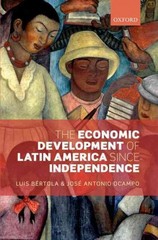Homework....help in workings
Question: A survey indicated that chocolate is Americans' favorite ice cream flavor. For each of the following, indicate the possible effects on demand, supply, or both as well as equilibrium price and quantity of chocolate ice cream. a. A severe drought in the Midwest causes dairy farmers to reduce the number of milk-producing cattle in their herds by a third. These dairy farmers supply cream that is used to manufacture chocolate ice cream. b. A new report by the American Medical Association reveals that chocolate does, in fact, have significant health benefits. c. The discovery of cheaper synthetic vanilla flavoring lowers the price of vanilla ice cream. d. New technology for mixing and freezing ice cream lowers manufacturers' costs of producing chocolate ice cream.Question: Although he was a prolific artist, Pablo Picasso painted only 1,000 canvases during his "Blue Period." Picasso is now dead, and all of his Blue Period works are currently on display in museums and private galleries throughout Europe and the United States. a. Draw a supply curve for Picasso Blue Period works. Why is this supply curve different from ones you have seen? b. Given the supply curve from part a, the price of a Picasso Blue Period work will be entirely dependent on what factor(s)? Draw a diagram showing how the equilibrium price of such a work is determined. c. Suppose rich art collectors decide that it is essential to acquire Picasso Blue Period art for their collections. Show the impact of this on the market for these paintings.Question: Show in a diagram the effect on the demand curve, the supply curve, the equilibrium price, and the equilibrium quantity of each of the following events. a. The market for newspapers in your town Case 1: The salaries of journalists go up. Case 2: There is a big news event in your town, which is reported in the Practice Questions and Answers from Lesson I-4: Demand and Supply newspapers. b. The market for St. Louis Rams cotton T-shirts Case 1: The Rams win the Super Bowl. Case 2: The price of cotton increases. c. The market for bagels Case 1: People realize how fattening bagels are. Case 2: People have less time to make themselves a cooked breakfast. a. The market for the Krugman and Wells economics textbook Case 1: Your professor makes it required reading for all of his or her students. Case 2: Printing costs for textbooks are lowered by the use of synthetic paper.2. Natural resource depletion in the Solow model. Consider a Solow model where output is given by the CRS production function Y(t) = K(t)"R(t)(A(t) L(t ) ) 1--4 0
0 R(t) = -OR(t) The rest of the model is as standard with constant savings rate s, depreciation rate o, produc- tivity growth g and employment growth n. (a) Let gy(t) and gu(t) denote the growth rates of output and the capital stock. Derive a formula for gy (t) in terms of gx(t). (b) Let gy and gi denote the growth rates of output and the capital stock along a balanced growth path. Show that along any balanced growth path gp = gp. Solve for this growth rate. (c) Does the economy necessarily converge to a balanced growth path? Explain. (d) Now suppose instead that resources R(t) grew in line with population, R(t) = nR(t). Compare the long-run growth rate of the economy with resource depletion from part (b) to the long growth rate of this alternative economy without resource depletion. What would make this gap between the growth rates large? Explain.3. Transitional dynamics in the Ramsey-Cass-Koopmans model. Suppose the planner seeks to maximize the intertemporal utility function Advanced Macroeconomics: Problem Set #1 subject to the sequence of resource constraints Ci + Kil = F(K, L) + (1-6)Kt 0 0. The production function has the Cobb-Douglas form Y = F(K, L) = AK*LI-a, 0 0 and the labor force L > 0 are constant. Let a = Ct/L, ki = Ki/L, ye = Yt/L etc denote consumption, capital, output etc in per worker units. Suppose that the period utility function is strictly increasing and strictly concave. (a) Derive optimality conditions that characterize the solution to the planner's problem. Give intuition for those optimality conditions. Explain how these optimality conditions pin down the dynamics of & and ke- (b) Solve for the steady state values c', k", y" in terms of the parameters. How do these steady state values depend on the level of A? (c) Suppose the economy is initially in the steady state you found in (b). Then suddenly there is a permanent increase in productivity from A to A' > A. Use a phase diagram to explain both the short-run and long-run dynamics of a and & in response to this increase in productivity. Does c, increase or decrease? Explain. Now consider the specific utility function u(c) = log(c). (b) Log-linearize the planner's optimality conditions around the steady-state. Guess that in log- deviations capital satisfies and that consumption satisfies & = work Use the method of undetermined coefficients to determine vex and wex in terms of model pa- rameters. How if at all do these depend on the level of A? Now consider the specific numerical values o = 0.3, 8 = 1/1.05, 6 = 0.05 and A = 1. (c) Calculate the values of xx and wax. Suppose the economy is at steady state when suddenly at t = 0 there is a 5% permanent increase in the level of productivity from A = 1 to A' = 1.05. Calculate the transitional dynamics of the economy as it adjusts to its new long run values. In particular, calculate and plot the time-paths of capital, output, and consumption until they have converged to their new steady state levels. (e) How if at all would your answers to parts (b) through (d) change if o was lower, say o = 0.5? Or higher, say o = 2? Give intuition for your answers











